A lot of English speakers are scared of trying to learn the Sanskrit names of yoga poses—it all just sounds completely impenetrable to them especially if a teacher is just quickly rattling off the names or maybe never uses them at all. But in my experience, once you learn a few “secrets” about the language you will find it much easier to remember poses names and even to figure out what new ones means.
First of all, English actually is related to Sanskrit! Here are some examples. (If you say the words out loud it’s easier to see the connections between the English and Sanskrit.)
Supta: An example of those that shows up in many pose names is the Sanskrit word “supta.” This is related to the English word “supine,” which, of course, means to lie on your back (as opposed to lying prone, which means lying on your belly) So you see that any pose name that includes the word “supta” means you will be lying on your back. Examples include Supta Baddha Konasana (Reclined Cobblers pose/Reclined Bound Angle Pose) and Supta Virasana (Reclined Hero Pose), and Supta Padangusthasana (Reclined Leg Stretch).
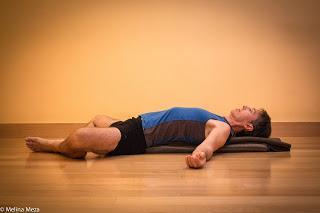
Supta/Reclined Bound Angle Pose
Kona: Another example is the Sanskrit word “kona,” which is used in pose names to mean “angle.” This is related to the English word “corner”! You see where corner and angle can mean the same thing. Examples include Badha Konasana (Cobbler’s pose/Bound Angle pose), Utthita Parsvakonasana (Extended Side Angle pose), Upavista Konasana (Seated Wide Angle pose), and Trikonasana (Triangle pose)—I bet you can think of more.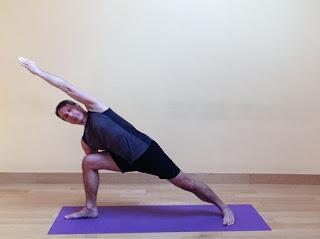
Extended Side Kona/Angle Pose
Baddha: Another example is the Sanskrit word “baddha.” This is related to the English word “bind” or "join." Examples include—wait for it—Supta Baddha Konasana (I have now just translated the whole long pose name for you and shown you how it is related to English!), Baddha Konasana, and Urdva Baddha Hastasana (Upward Bound Hands pose).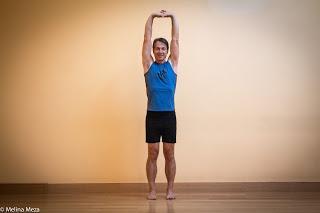
Upward Baddha/Bound Hands Pose
Tri: The Sanskirt word “tri,” which means “three,” is another good example. The first part of Trikonasana (Triangle pose) added to “konasana” means three angle pose, and you can see in English we literally use the “tri” ourselves instead of three. The word "tri" appears in some other pose names as well.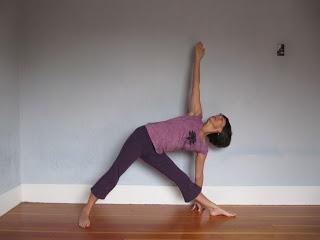
Triangle Pose
Pada: This means “foot” and is related to our English words “pedal” and “pedestrian.” An example is Hasta Padasana (Hands and Feet pose), where you tuck your hands under your feet in a Standing Forward Bend. If a pose name, such as Eka Pada Rajakapotasana and Urdhva Prasarita Eka Padasana” contains the phrase “eka pada” that means there is just one foot involved, rather than two.Hasta: This means “hand,” and is related to well, our word “hand.” Examples are Urdva Hastasana (Upward Hands), Urdva Baddha Hastasana (Upward Bound Hands), and Utthita Hasta Padasana (Extended Hand and Foot pose).
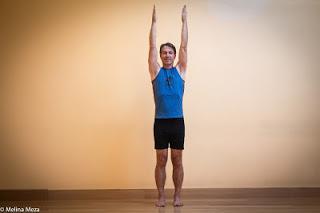
Upward Hands Pose
Yoga: Of course, the Sanskirt word “yoga” is itself is related to the English word “yoke” and also means union. So in yoga, we are yoking the body to the mind or the self to the Divine to achieve union.
There are more examples for sure (I’m thinking "urdva" and "upward" might be related), but I think you get the point. Once you open your mind to this concept, you’ll find it’s easier to make sense Sanskrit.
I was going to continue on with this lesson with something about suffixes and prefixes, but now I realize that if this is new to you your brain might be overloading at this point. So I’ll continue with this series another day!
Do let me know if you find this helpful. And if you speak another language besides English, maybe your language is also related to Sanskrit. Let us know what you find out about that!
Subscribe to Yoga for Healthy Aging by Email ° Follow Yoga for Healthy Aging on Facebook ° Join this site with Google Friend Connect

